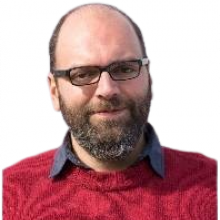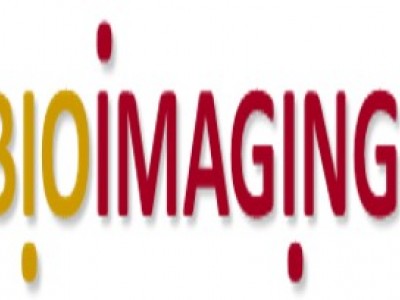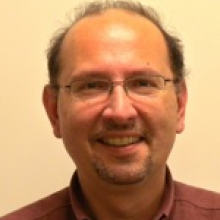

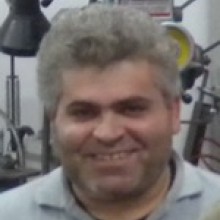
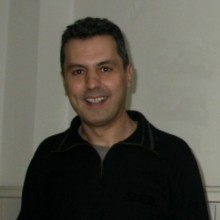
At IESL-FORTH since 1990 as specialized technical scientist
Areas of expertise include:femtosecond excimer-dye laser system,excimer lasers,Nd:YAG lasers and systems,optoelectronics,experimental setups,student training
Education
- University of Thessaloniki Physics Department
- Graduate studies on excimer lasers at the National Hellenic Research Foundation ,Athens
Awards/Prizes/Distinctions
- Best support staff award 2002
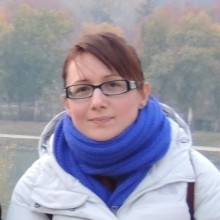
Education
- 2002, BSc in Physics, Aristoteleion Apnepistimion THessalonikis, Greece
- 2007, MSc in Art Conservation Science, Aristoteleion Apnepistimion THessalonikis, Greece
Career
- 2017 - Present, Research Assistant at Römisch-Germanisches Museum
- 2017- Present, Research Assistant at Max Planck Insitute for Polymer Research
- 2005- 2017 Physicist Mcs In COnservation Science IESL -FORTH
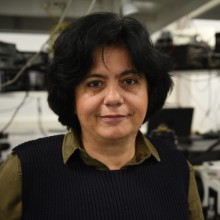
Education
- 1991, M.Sc in solid state physics, Physics Dpt, University of Crete, Greece
- 1987, B.Sc in Physics, Physics Dpt, University of Crete, Greece
Career
- 1991 - today, Technician, Microelectornics Research Group, FORTH - IESL, Greece
- 1987 - 1991, Research assistant, Amorhpous semiconductor Lab, FORTH - IESL, Greece
Interests
- optical semiconductor characterization
- optoelectronic device characterization
Dr. Athanasios Zacharopoulos received his Degree in Mathematics, 1999, from the Department of Mathematics in the Aristotle’s University of Thessaloniki. After an MSc in Vision Imaging and Virtual Environments he completed his PhD thesis “Three-Dimensional Shape-Based Reconstructions in Medical Imaging” from the Computer Science Department in University College London. His main research interests lay in the field of (Biomedical) Imaging and more specifically 3D Image Reconstruction algorithms, Inverse problems, Parametric description of 3D surfaces and Boundary Element – Finite Elements modelling with main focus on the applications of Optical Tomography. He has been working as a Research Associate at FORTH since 2009.
Other positions: Research Associate in the Computer Science Dept. and the Centre for Medical Image Computing (CMIC) of University College London 2005-2012.Researcher in Mathematics in the Departamento de Matematicas Universidad Carlos III de Madrid (Dec 2004 until August 2005), Visiting Researcher in the Optical Imaging Lab, NMR Center, Massachusetts General Hospital, Harvard Medical School, in Boston.(July 2004), Visiting Researcher in the Department of Applied Physics, University of Kuopio, Finland, (September – October 2003). Citations 696, h-index 13 (Oct 2024)
Interests
- Image Processing - Medical Imaging Processing
- Inverse Problems - 3D Image Reconstruction algorithms
- Microscopy - Optical Projection Tomography
- Image registration and fusion
- Fluorescence Molecular Tomography

Dr. Giannis Zacharakis is a Research Director at the Institute of Electronic Structure and Laser – Foundation for Research and Technology (FORTH – IESL) and the Head of the Laboratory for Biophotonics and Molecular Imaging. He has served as the Vice President (2018 -2019) and President (2019-2020) of the European Society for Molecular Imaging (ESMI) and he has served two terms as a Member of the Council of the same Society (2014-2018). He is also the elected vice-president of the board of researchers at FORTH. He received his BSc in Physics in 1997 and his PhD in Biomedical Imaging in 2002 from the University of Crete. During 2003 and 2004 he has been a Research Fellow in Radiology at Harvard University, Cambridge MA USA. Between 2005 and 2009 he has been a Research Associate at FORTH-IESL and was promoted to Research Scientist between 2009 and 2016. In 2017 he was elected in his current position. His main fields of interest are Biophotonics, Biomedical and Optical Imaging focusing on developing novel tools and key enabling technologies for imaging biological processes in living systems, ranging from cells to organs to whole organisms. He is active on both applied and fundamental research on novel photonic devises, concepts and new theory development and has developed technologies for three-dimensional, tomographic imaging in model organisms and novel optical and optoacoustic microscopic techniques to extend imaging capabilities to unprecedented depths in opaque media. He has 63 publications in international peer-reviewed journals, 48 articles in peer-reviewed conference proceedings, 2 book chapters, 1 editorial article and 2 patents, as well as over 1700 citations (h-index: 19, Google Scholar). He has more than 50 presentations in international conferences, where he has been awarded 3 first prizes and has been invited more than 20 times in international conferences, schools and meetings.
Education
- 2002, PhD, Biomedical Imaging, University of Crete
- 1997, BSc Physics, University of Crete
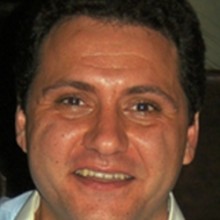
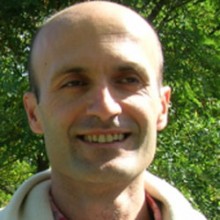
George D.Tsibidis is a Research Scientist at the Institute of Electronic Structure and
Laser at FORTH. He received his PhD in Theoretical High Energy Physics at the
University of Sussex in 1997. In 2017 he visited University of Lyon, Laboratoire
Hubert Curien, University of Saint Monnet, Saint-Etienne, France, as a Visiting
Professor. His interests include theoretical approaches related to ultrafast laser
interaction with materials and laser processing. He has been the author of numerous
peer-reviewed scientific papers on laser-matter interaction. He has been invited to a
large number of international conferences on laser-matter interaction and he has
participated in many competitive research projects.
Education
- 1997, Ph. D. Physics Department, University of Sussex, UK.
- 1993, Master of Science, Physics Department, University of Pennsylvania, PA, USA.
- 1990, Bachelor, Department of Physics, University of Athens, Greece.
Career
- 4/2004-Today, Research Associate, Institute of Electronic Structure and Laser, Foundation for Research and Technology – Hellas, Heraklion, Greece.
- 31/8/2017-1/10/2017, Visiting Professor, University of Lyon, Laboratoire Hubert Curien, University of Saint Monnet, Saint-Etienne, France.
- 10/2000 - 12/2002, Postdoctoral Research Fellow in the Mathematics Institute, University of Warwick, UK.
- 1//2000-10/2000, Postdoctoral Research Fellow in the School of Electrical Engineering, University of Birmingham, UK.
Interests
- Theoretical modelling and simulation of the interaction of pulsed lasers with semiconducting, metallic and dielectric surfaces (fundamental physical mechanisms),
- Theoretical investigation of the formation of nano/micro-sized structures on solids after irradiation with pulsed laser sources-craters, ripples, grooves,
- Theoretical investigation of local nano-heating and substrate modification based on enhanced absorption and near-field properties of metallic nanoparticles,
- Fluid dynamics modelling to explain surface modification effects,
- Exploration of stress/strain generation and thermomechanical effects,
- Electromagnetic wave propagation inside solids (Finite Difference Time Domain techniques),
- Elaboration of conditions that induce thermo-elastic-plastic effects on thin and bulky semiconducting and metallic surfaces,
- Simulations and modelling in optical fibres (use of Finite Difference Time Domain methods, CUDOS, etc).
- Applications of reaction-diffusion equations to model and simulate various physical processes


